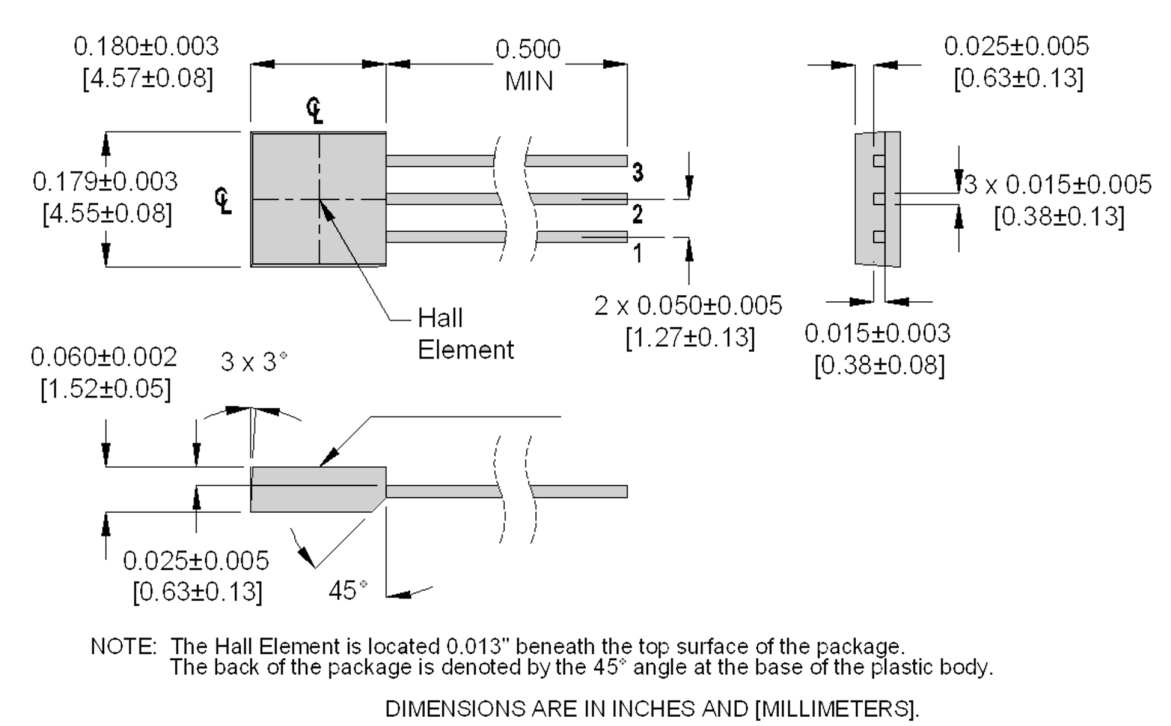TT Electronics Hallogic Hall-Effect Sensors
TT Electronics Hallogic Hall-Effect Sensors are designed for non-contact switching operations. These devices contain a monolithic integrated circuit that incorporates a Hall element, a linear amplifier, a threshold amplifier, and a Schmitt trigger on a single Hallogic silicon chip. The Hallogic Hall-effect sensors feature logic level output and provide up to 21mA of sink current. This allows direct driving of more than 7 TTL loads or any standard logic family using power supplies ranging from 4.5V to 24V.
The Hallogic Hall-Effect Sensors come in Unipolar non-latching and Bipolar non-latching configurations. The Uni-Polar turns on with a (logic level “0”) after a sufficient magnetic field from the south pole of a magnet approached the symbolized face of the device (Operating Point) and turns off (logic level “1”) after the magnetic field reached a minimum value. The Bi-Polar latch device turns on (logic level “0”) in the presence of a magnetic south pole and turns off (logic level “1”) when subjected to a magnetic north pole. Both magnetic poles are necessary for operation for Bi-Polar devices. This feature makes these sensors ideal for applications in noncontact switching operations, brushless DC motors, and for use with multiple pole magnets.
Features
- Designed for non-contact switching operations
- Drive capability up to 7 TTL loads
- Operates over a broad range of supply voltages (4.5V to 24V)
- Operates with excellent temperature stability in harsh environments
Applications
- Assembly line automation
- Door sensor
- End of travel sensor
- Machine automation
- Machine safety
- Non-contact reflective object sensor
Electrical Specifications
| Parameters | Value | Unit | |
|---|---|---|---|
| Supply voltage | 25 | V | |
| Storage temperature range | -65 to +160 | °C | |
| Operating temperature range | OHN30_ _U | -20 to +85 | °C |
| OHS30_ _U | -40 to +125 | °C | |
| OH090/180/360U | -40 to +150 | °C | |
| Output ON current | 25 | mA | |
| Output OFF voltage | 25 | V | |
Hallogic Hall-Effect Sensors Dimensions

Hallogic Hall-Effect Sensors Application Circuit


